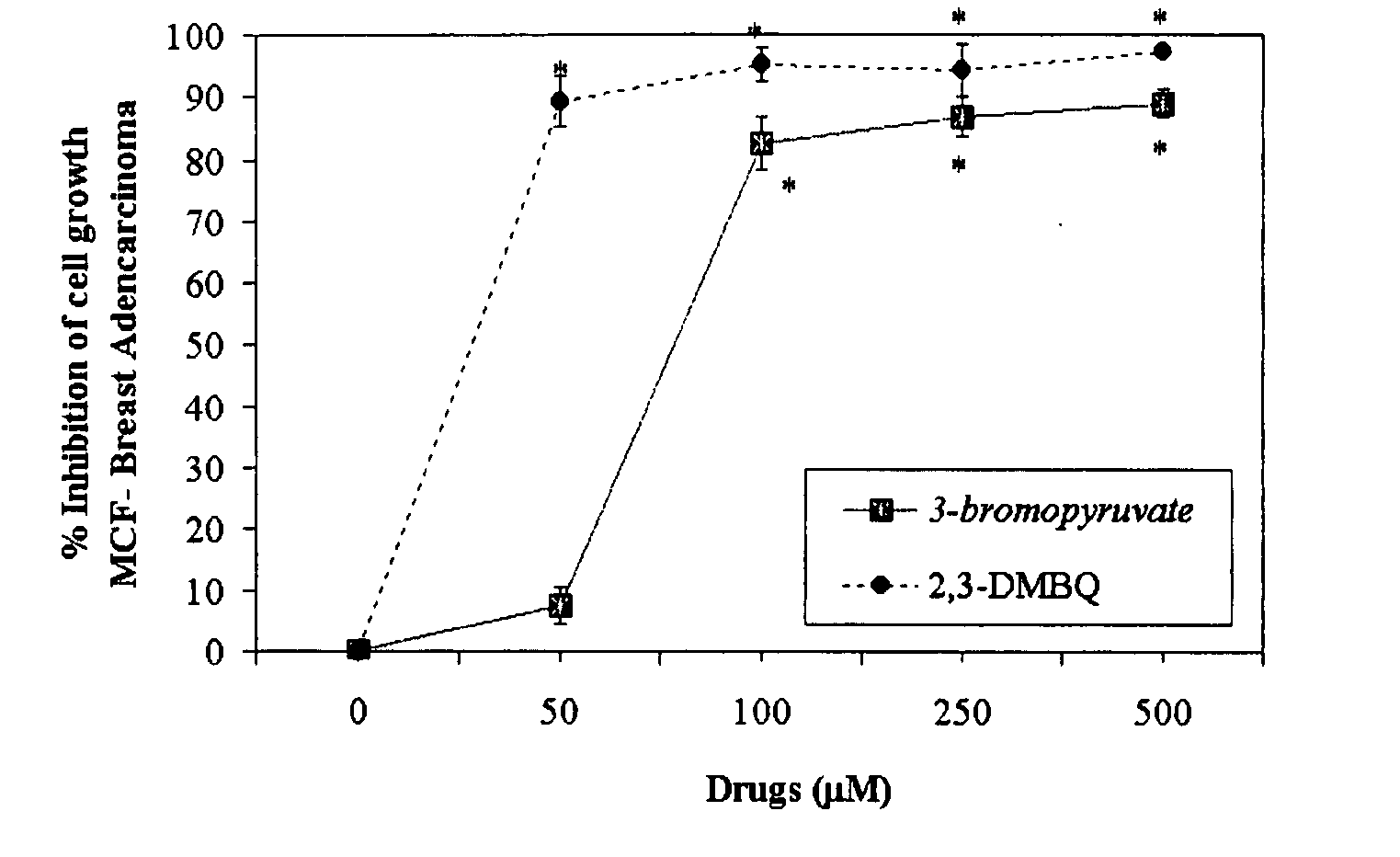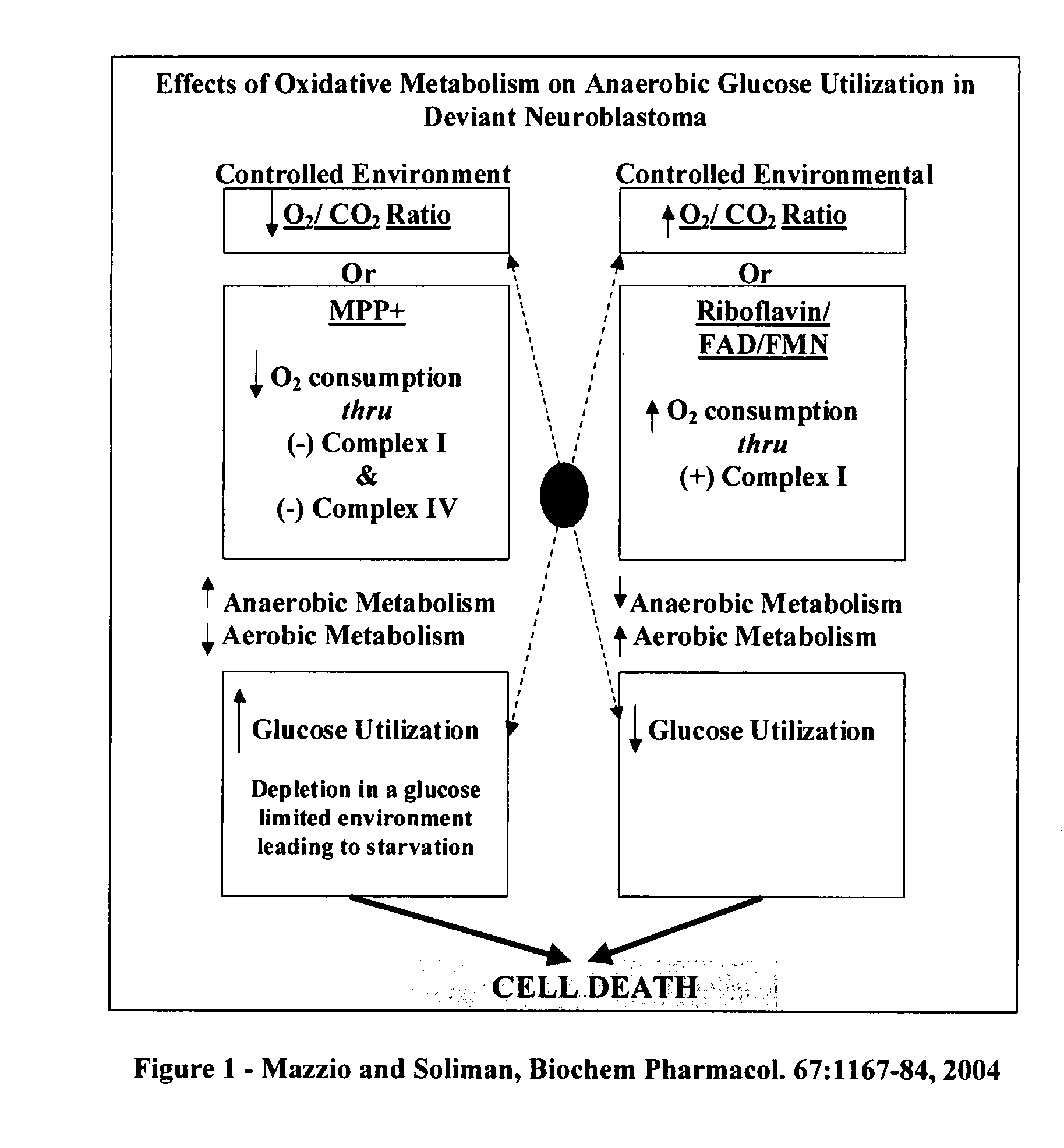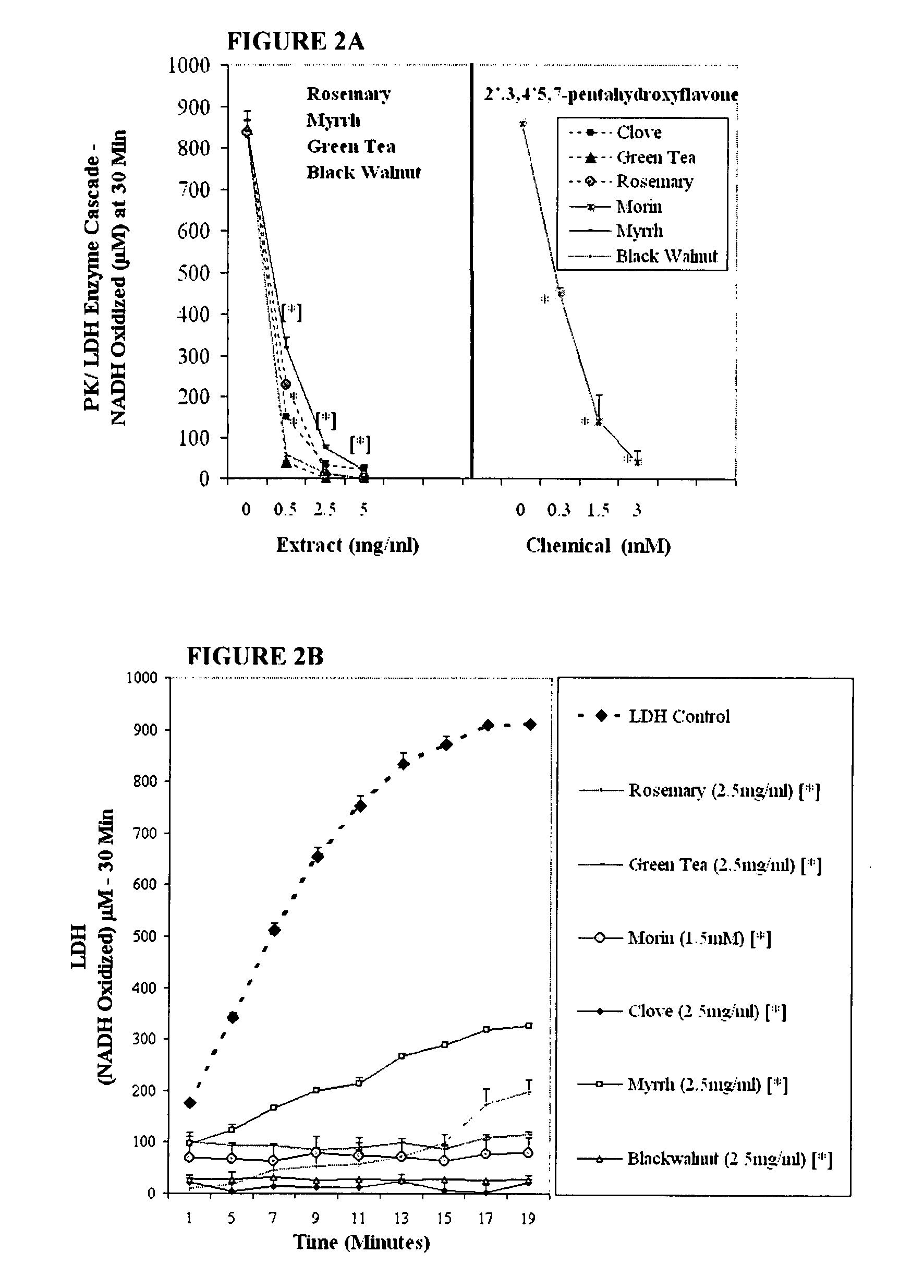Nutraceutical composition and method of use for treatment / prevention of cancer
a technology of nutraceuticals and compositions, applied in the field of nutraceutical compositions and methods of use for cancer treatment and/or prevention, can solve the problems of not being typically communicated to primary care physicians, falling prey to multi-marketing scams, harm to consumers, etc., and achieves robust enhancement of o2 utilization, enhancing mitochondrial function, and reducing the effect of cancer
- Summary
- Abstract
- Description
- Claims
- Application Information
AI Technical Summary
Benefits of technology
Problems solved by technology
Method used
Image
Examples
examples
[0089] The examples as set forth include those actually tested in studies (*) and theoretical examples. In these examples: the term “OXPHOS (+)” represents mitochondrial augmenting component, “LDH (−)” represents the LDH inhibitor component, “AIC (−)” represents DMBQ, the Herb (+) component defines the most potent and safe anti-cancer herbs as designated in Table 1A. The term Alkaline (+) describes neutralizing agents and the term Proliferation (−) includes selected herbs that were found in our lab to exert anti-proliferative effects on cancer cells. The broad range is not necessarily limited by the upper limit, and the optimal dose is the preferred embodiment for formulation. The values for human are based on a population estimate for a standard adult human weight (70 kg), where mg / day denotes mg / day / human.
TABLE 2Example 1: Formulation - PreferredMg / dayMgs (Tot)% WtComponent / Constituent / Rangemg / daymgs (total)% wt fractionOXPHOS (+)Riboflavin* (0-1000 mg+)˜300˜300˜3%LDH (−)2′,3,4′...
PUM
 Login to View More
Login to View More Abstract
Description
Claims
Application Information
 Login to View More
Login to View More - R&D
- Intellectual Property
- Life Sciences
- Materials
- Tech Scout
- Unparalleled Data Quality
- Higher Quality Content
- 60% Fewer Hallucinations
Browse by: Latest US Patents, China's latest patents, Technical Efficacy Thesaurus, Application Domain, Technology Topic, Popular Technical Reports.
© 2025 PatSnap. All rights reserved.Legal|Privacy policy|Modern Slavery Act Transparency Statement|Sitemap|About US| Contact US: help@patsnap.com



